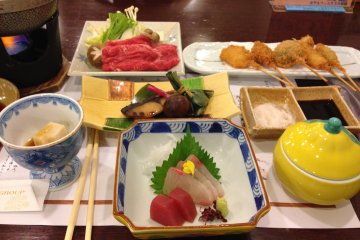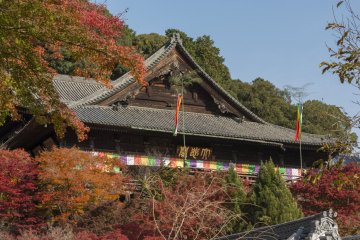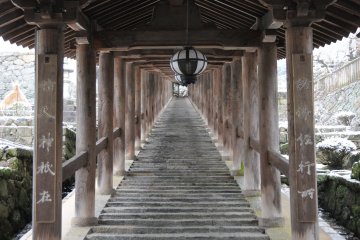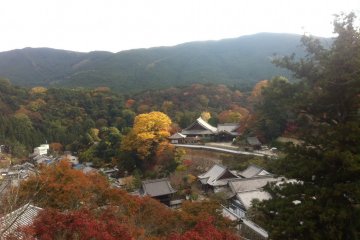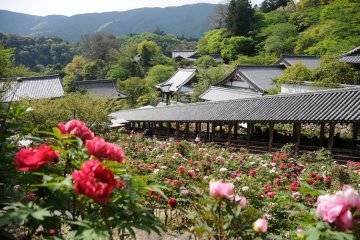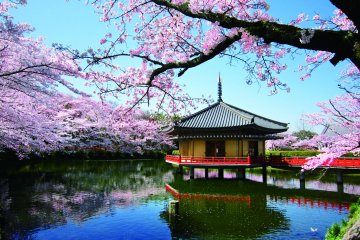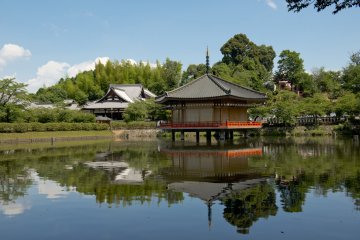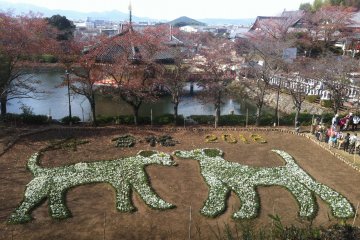Perched in the mountains of Yamato, a short distance from Sakurai City in Nara Prefecture, are two of the four temples of the Yamato spiritual pilgrimage. The Hasedera Temple overlooks a narrow valley where traditional Japanese houses line up along the riverside. The temple is perhaps best known for the peony blooms in May, but the red leaves in autumn and the cherry blossoms in spring are also not to be missed. The Abe Monjuin, at the border between the city and the mountains, has a beautiful hexagonal pavilion, on the lake next to the temple.

The 'Noboriro' (enclosed stairway) rises 399 steps from the entrance at the Nio-mon Gate to the Hondo, pass by the surrounding flowers and stone lanterns. When you reach the top, an amazing view awaits upon the temple terrace. The valley and the mountains around provide a breathtaking moment. From the top visitors can also see the famous pagoda temple, framed by flowers constantly changing with the seasons.


This ancient temple was built in 686, and has thrived since as one of the centers of the Shingon Buddhist sect. The main statue is the eleven-faced Kannon, a beautiful and imposing example of the Muromachi sculpture. It reaches 10 meters in height, and is known for being the tallest wooden Buddhist sculpture in Japan. Believers visit on a regular basis to find changes in the expression of her face. After taking in the main hall up close, be sure to catch another beautiful view of the hall and the stairs from the pagoda area.

The temple Abe Monjuin is known for its national treasure statue of Monju Bosatsu, the Buddha of wisdom. This national treasure is an impressive sculpture over 7-meters high. The delicacy of the visage and the elegance of the statue is extraordinary, especially considering its size. Visitors often stand for long moments in front of it captivated by the beauty. This is the biggest statue of Monju Bosatsu in Japan. It was sculpted by Kaikei, a master in Buddhist sculpture of the Kamakura period. The sculpture is amazingly quiet and serene.

Abe Monjuin temple is an ancient Buddhist temple in Japan. Built in 645, it is said that this temple was where those who bear the name "Abe" are descended from. This links persons as diverse as Abe no Nakamaro, a great poet of the Nara period, Abe no Seimei, legendary figure of Heian period or the current Prime Minister (2017), Abe Shinzo.

Abe Monjuin is also known for its hexagonal pavilion, the biggest in Japan. Then there is the famous garden of flowers, where the Chinese zodiac sign is created in flowers every year. There is also a tumulus, or ancient burial site, impressive of symmetry and a shrine for Abe no Seimei.
Finally, and above all, the temple is incredibly foreigner-friendly. Toursists may pay by credit card, Wi-Fi connections are available throughout the temple and with the ticket comes with a nice snack of matcha tea and sweets.







